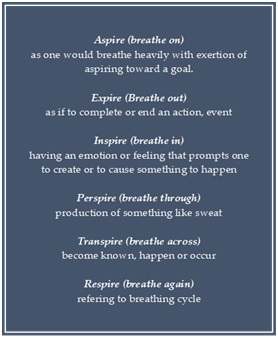A Coaching Model Created by Lorrie Ortiz
(Executive Coach, UNITED STATES)
A coaching model addressing the wellbeing of physicians so they can continue their focus on the wellbeing of others.
The world of healthcare has changed for the clinical healthcare professional. From a focus of addressing the specific health needs of ailing patients, health professionals now must understand and address the business of medicine – the regulations, the audits, the customer service, the needs of other departments, the environment, the competitive market as well as the ever-increasing complexity of medicine.
According to Drs. Gail Gazelle, Jane M. Liebschutz, and Helen Riess, in their article, Physician Burnout: Coaching a Way Out, twenty-five to sixty percent of physicians report burn-out[1] across all specialties. Other professions such as nursing are faring similarly with burn-out. According to the American Nurses Association, 96 out of 100 nurses report fatigue at the beginning of their shift. Long hours, high stress, the emotional strain of patient circumstances, and lack of sleep are contributing to high levels of burn-out. Burnout among clinical care professionals can jeopardize the quality of care and has the potential to increase medical errors.[2]
There is a way out of burnout, however, through professional coaching. According to a Mayo Clinic Study[3], doctors who engaged in professional coaching reported less burn-out and a higher quality of life than their pre-coaching self-assessment. Moreover, physicians who did not engage in coaching were given the same assessments and reported worsening systems of burn-out versus those who engaged in coaching.
Part of the belief why professional coaching works for physicians is that professional coaching provides a results-oriented, future-focused, and stigma-free method to address the major stressors in a physician’s life. The ability for the physician to focus on and increase their internal control alleviates the exhaustion that comes from their daily duties allowing the physician to return to their purpose, lean on their natural strengths, and re-engage with their work.
 The Latin verb spirare means “breathe,” and is a source of many other action-related words associated with breathing on, out, in, through, across, over, and in a regular cycle. Physicians face a similar collection of words associated with their position: leader, owner, authority, provider, coach, mentor, model, boss, influencer, doer, teacher, principal, etc. Serving to be everything to everyone is enough to make anyone lose the joy in their work and experience burn-out.
The Latin verb spirare means “breathe,” and is a source of many other action-related words associated with breathing on, out, in, through, across, over, and in a regular cycle. Physicians face a similar collection of words associated with their position: leader, owner, authority, provider, coach, mentor, model, boss, influencer, doer, teacher, principal, etc. Serving to be everything to everyone is enough to make anyone lose the joy in their work and experience burn-out.
My coaching model provides an opportunity for the physician to actively engage inspirare[4] to discover and re-discover their purpose and re-engage their work:
Breathing out[5] to be ready for coaching and the results that will come.
Breathing across[6] to see alternative perspectives and gain self-awareness.
Breathing through[7] to remove obstacles, understand and apply natural strengths and action plan
Breathing in[8] to regain their purpose and re-engage with their work.
Breathing Out
Breathing out involves working with the client to establish the coaching agreement, confirm a stigma-free, confidential approach, and define the differences, if necessary, between preceptor, mentor, and a coach including the philosophies that define each of those roles.
Model questions include:
- What is your intent?
- What do you want to create or re-create?
- What do you want to achieve?
- What does success look like for you?
- Who will you be when you achieve your goal?
- What is meaningful about the goal you want to achieve?
Breathing Across
Much like an initial physical assessment of a patient, breathing across allows the physician client to examine the “symptoms” through analysis of values, underlying beliefs, judgment, and self-expectations making way for self-awareness.
Model questions include:
- What other choices do you have?
- What is another perspective?
- If a patient presented with similar issues, what perspective would you provide?
- Do you know that to be true?
- What are the underlying assumptions you are making about yourself?
- What is the truest thing you know about yourself in this situation?
- What do you need to let go of?
- How is that serving you?
Breathing Through
One room is made for self-awareness, breathing through allows physician clients to examine their natural strengths and the obstacles that need to be removed to re-engage with work.
Model questions include:
- What might be preventing you from moving forward?
- What is getting in the way of doing this now?
- What has your mentor engaged your talents for?
- Who may be able to support you in removing that obstacle?
- What are you most excited about this work?
Breathing In
Breathing in allows the physician client to re-actualize their purpose and regain control of their wellbeing through their strengths. This is the action planning step of the process to put into practice what the client has learned.
Model questions include:
-
- What would you like to acknowledge about this new learning?
- How will you celebrate this new learning?
- What is the first thing you will do to put this into practice?
- How will you make this work a priority in your day?
- How will you hold yourself accountable?
- Who else can support you in this work?
- When would you like to meet next?
Resources
[1]Burn-out is defined as a low sense of personal accomplishment, emotional exhaustion, cynicism, and depersonalization. Maslach, a pioneering burnout researcher, noted that burnout starts when “energy turns into exhaustion, involvement turns into cynicism, and efficacy turns into ineffectiveness.”
[2]Spickard A Jr, Gabbe SG, Christensen JF. Mid-career burnout in generalist and specialist physicians. JAMA. 2002;288(12):1447–50.Leiter MP, Frank E, Matheson TJ. Demands, values, and burnout: relevance for physicians. Can Fam Physician. 2009;55(12):1224–5. 17. Wallace JE, Lemaire JB, Ghali WA. Physician wellness: a missing quality indicator. Lancet. 2009;374(9702):1714–21.
[3]By Robert Nellis, Professional Coaching Alleviates Burnout Symptoms in Physicians, August 5, 2019
[4]ICF competencies are consistently demonstrated throughout each session with emphasis on specific competencies as the client becomes self-aware and moves to action planning.
[5]Specific emphasis of ICF competencies 1-4 (foundation, co-creating the relationship, cultivating trust and safety)
[6]Specific emphasis of ICF competencies 3-8 (foundation, co-creating the relationship, cultivating trust and safety, communicating effectively, cultivates learning and growth)
[7]Specific emphasis of ICF competencies 5-8 (cultivating trust and safety, communicating effectively, cultivates learning and growth)
[8]Specific emphasis of ICF competencies 6-8 (communicating effectively, cultivates learning and growth)
